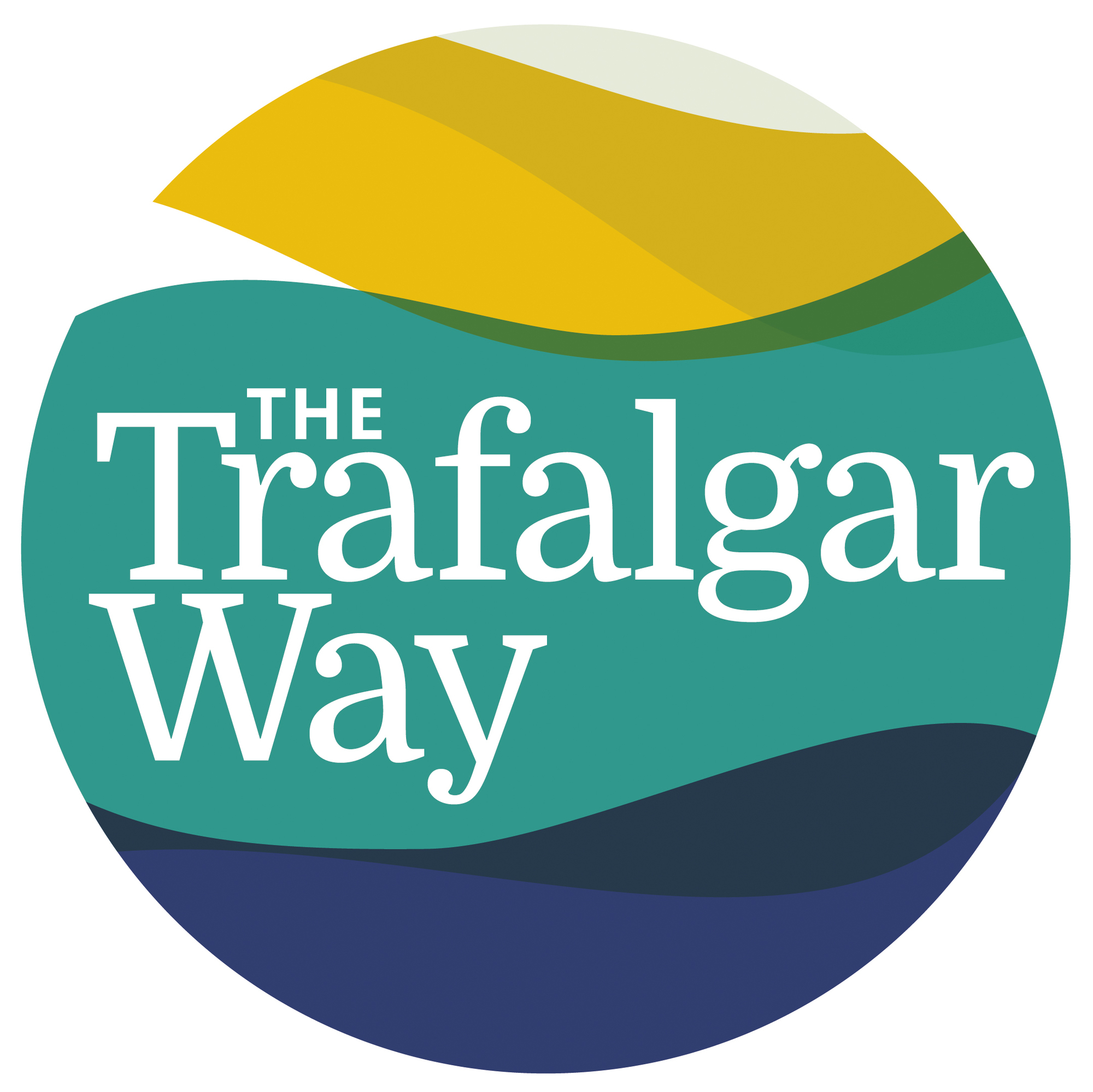Briefing Sheet - General information and Themes for Education and Engagement
About The Trafalgar Way
In 2005, the bicentenary of the Battle of Trafalgar, a group of trustees from The 1805 Club joined forces with other interested parties to form The Trafalgar Way Trust. Inspired by 'La Route Napoleon' in France, and 'Paul Revere's Ride' in the USA, they researched and defined a commemorative route over land, as followed by the messenger Lt Lapenotiere who raced from Trafalgar to London carrying the official dispatches. These bore news of the victory over Napoleon's combined fleet and of Nelson's death.
Since 2005 the Trust has been disbanded and The Trafalgar Way, now under the custodianship of The 1805 Club, has become more established. It follows the historic coaching route from Falmouth to the Admiralty in central London. The route covers some 270 miles and passes through seven counties, visiting classic Georgian towns, rustic villages and spectacular scenic countryside. At its inauguration, a series of memorable re-enactments were held, and to date 39 informational plaques have been erected along the Way, the first of which was unveiled by Her Royal Highness the Princess Royal at Falmouth.
In 2017 The Trafalgar Way benefitted from a grant awarded by the Chancellor's LIBOR fund and a new phase of the programme has now been launched with the aim of
- Raising the profile of The Trafalgar Way so that it becomes part of the national consciousness and a destination for visitors from all over the world.
- Ensuring the continuation of the historic legacy in future decades via education, public engagement and activities.
- Raising new funds to support the ongoing legacy and ensure that it is financially and practically sustainable for generations to come
Themes for Education and Engagement
The Trafalgar Way offers innumerable opportunities to educate and inspire children and young people at every level. Some of the themes that emerge naturally are as follows:
Storytelling
At the heart of The Trafalgar Way is an exciting story and the more that story is explored and retold the more characters, side stories and sub plots emerge. In all our activities it is our intention to make people a part of The Trafalgar Way Story by getting them actively involved through holidays, day trips, games, competitions, and challenges.
Maritime History
The Georgian period within which the Trafalgar Way story occurs is remarkably neglected with no specific part of the National Curriculum covering it. Yet the Battle of Trafalgar was one of the major turning points in world history. The Trafalgar Way offers an appealing local context in which to consider this remarkably rich history, focusing as it does on a highly engaging personal story of Lt. Lapenotiere and his journey.
Communication
The Trafalgar Way story brings to startling life the remarkable developments that have taken place in the field of communications. In 1805 the options for conveying a message quickly and accurately were extremely limited. On land travelling by 'post-chaise express' was the optimum way for official messages to reach their destination. Telegraph, rail transport and telecommunication came later, and the contrast with today's high-speed internet and wireless communications could hardly be more marked.
The age of sail and horse
Travel at the time of The Trafalgar Way could hardly be more different from our modern age and Lt Lapenotiere's sea journey from off Cape Trafalgar to Falmouth was hazardous in the extreme. At one point he was forced to jettison his guns in a gale and later he met a dead calm and had to order all hands to the oars. On his land voyage he had to change horses twenty-one times at all times of day and night. The fact that he was able to do so demonstrates how organised the post-chaise system was - and how ubiquitous the horses that powered it.
Resilience and determination
Lt Lapenotiere was driven by the chance of reward, but also by stubborn resolve and solid sense of duty. Only a few days before being given this responsibility, Nelson himself had ordered his famous flag signal "England expects that every man will do his duty." Lt Lapenotiere clearly took this to heart. His journey was completed in extraordinary timescales under arduous conditions. Today, this resolve and singlemindedness is reflected in the cycling challenges undertaken along the Way and can be used to inspire young people to be resilient, determined and purposeful in their own lives.
Contact: Kathy Brown, thetrafalgarway@1805club.org







